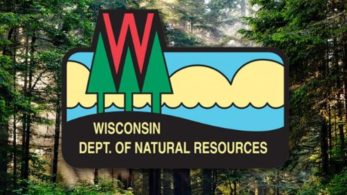OutWiGo Snow!
Plus Catch And Release Tips, Winter Fire Safety And More
Looking for a new winter activity that gets you out of the house and enjoying the great outdoors? Check out some of the best skiing and snowshoe trails, scenic winter views, wildlife sights, campfire areas, sledding hills and more in our northern Wisconsin winter exploration maps. Stay tuned: We’ll be featuring southern Wisconsin locales next week.
Northern Wisconsin OutWiGo Winter Exploration Maps
OutWiGo is a statewide initiative encouraging everyone to improve their overall health and wellness by getting out and active in the outdoors. Share your OutWiGo adventures using #OutWiGo.
How To: Catch And Release
Whether you are fishing an open stream or in a shanty, remember to practice responsible catch and release.
It’s important to reduce the stress on a fish after it has been caught.
You can increase a fish’s chances for survival by following a few steps:
- Reduce your reel-time with the fish.
- Keep the fish in the water as much as possible.
- Use a rubber net and wet hands or gloves (if possible).
- Keep your handling time to 60 seconds or less and keep unhooking tools readily available.
- If the fish is deeply hooked, cut the line and let the fish go.
- Treat the fish gently throughout the release. Support the fish with both hands and place the recovering fish in the water, with the current or gently move the fish from side to side.
For tips on how to release a specific fish species, click here. |
Winter Fire Safety: Outdoor Brush Burning
Winter might seem like a perfectly safe time to burn, but it’s important to practice fire safety any time of year to prevent wildfires. When the ground is completely snow-covered, you can burn in DNR protection areas without a DNR burning permit. However, check with your local municipality, which may have additional restrictions.
Here are some tips for safe winter burning:
- Only burn brush piles that were covered with a tarp in fall and remained covered for several months.
- Notify the local fire department and dispatch offices in advance to avoid unnecessary fire response.
- Gather and pile brush in an open area away from over-hanging branches.
- When you are ready to burn, choose a calm day (winds less than 8 mph) with complete snow-cover on the ground. Snow must be contiguous and adjacent to the fire and remain for the duration of the burn.
- Place small amounts of crumpled clean paper into the brush around the base of the pile.
- Light the paper all around the base of the pile. Do not use the fire to dispose of household garbage, rubber tires, oil or other accelerants.
- Using a rake or shovel, turn the debris while in the flames to ensure all the materials are completely burned.
- Avoid standing in direct contact/downwind of smoke.
- Never leave the fire unattended.
When the fire is out, consider gathering nutrient-rich cold embers to use in flower beds and gardens in the spring. You can also consider alternatives to burning: compost, chip, leave brush for habitat or haul away to a transfer site. Learn more about fire safety here.
REMINDER: Spring is the peak of fire season in Wisconsin, so plan ahead and don’t wait until it’s too late to practice fire safety. |
Winter Tree Health: Risks And Resources
During Wisconsin’s first week of 2021, a beautiful weather phenomenon occurred: rime ice. Rime ice forms when the tiny water droplets in fog freeze on trees and other objects. Hoarfrost, a similar phenomenon that occurs without fog, can form when water vapor in freezing air contacts a surface. The best news is that these winter conditions should not concern tree health when we emerge from the winter fog in spring.
While rime ice is unlikely to cause damage, winter ice storms and wet, heavy snow can break branches or cause entire trees to fail. Winter also brings other threats, including:
- Frost damage on exposed tree parts and even roots if they are not insulated with snow in the spring. In most cases, trees recover from frost damage, but severe or repeated events may kill a tree or stress it enough that insects and fungi can invade.
- Sunscald, frost cracks and winter desiccation may also damage trees. Sunscald occurs when warm, sunny winter days are followed by freezing temperatures at night, causing trees to crack open, typically on the south or west sides. Frost cracks are a very similar issue. Trees are often able to recover from sunscald and frost cracks.
- Winter desiccation, which happens when conifers start photosynthesizing on warm, windy days in late winter or early spring. Conifers may dry out in these conditions if they use their stored water and cannot replace it because the ground is frozen. Conifers will survive minor or moderate damage but may die if the damage is severe.
- Salt spray from vehicles or salt that dissolves into the soil can result in bud death, twig dieback and root damage. Some plants are more sensitive to salt than others, so avoid planting sensitive plants along roads or other surfaces where salt is used.
Although Wisconsin’s native trees have evolved to deal with winter weather, they can still be damaged. Watch for damage and take corrective action if needed. Trees should be pruned when they are dormant during the winter since the chances of infestation by insects and diseases is very low. A little winter tree care is an effective step towards healthy trees!
Learn more about environmental issues that impact trees on the DNR Forest Health environmental damage webpage. |
|
